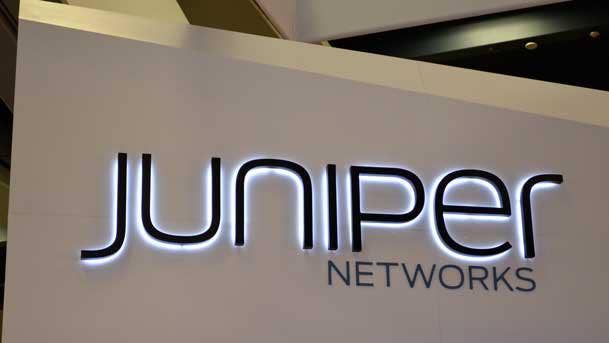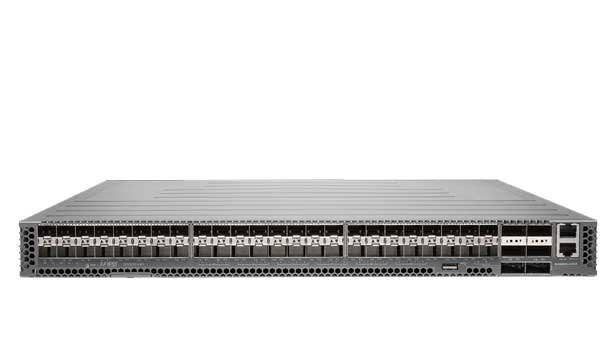Juniper Networks CEO Rami Rahim On The ‘Enterprise Execution Engine’ And the ‘Critical’ Role Partners Are Playing
Juniper’s CEO talks about the company’s transformation, the factors that culminated in its enterprise segment surpassing service provider and cloud as the company’s largest vertical in first-quarter 2022, and why this trend won’t just be an anomaly on the balance sheet.

Enterprise For The Win
For the first time in the history of Juniper Networks, the company’s enterprise business surpassed its long-established service provider and cloud businesses as the biggest segment from a revenue perspective. It’s been a work in progress to grow Juniper’s enterprise business and a transformation that the company had to actively make. Enterprise business taking the lead in first-quarter 2022 is a function of the strategy that Juniper put in place over the last couple of years, Juniper CEO Rami Rahim told CRN.
The Sunnyvale, Calif.-based company pulled in $433 million in enterprise revenue in the most recent quarter that ended March 31, up 18 percent compared with $365 million a year ago. Juniper generated $307 million in cloud revenue, up from $207 million, and $428 million in service provider revenue, compared with $438 million in first-quarter 2021. Software-based services climbed 60 percent year over year, and annual recurring revenue (ARR) grew 30 percent year over year. At the same time, the company wasn’t immune from global supply chain challenges, which increased Juniper’s backlog on a year-over-year basis. Juniper said it’s continuing to work to resolve these issues and has increased inventory levels and purchase commitments. Overall, orders grew by 35 percent year over year, pointing to strong customer demand, the company said.
Juniper’s focus on AI services and software are generating more interest from enterprises, especially as buying behaviors change and businesses look to inject more automation where they can into their IT processes. Juniper has also been on a bit of a buying spree to fill out its portfolio where needed, such as 128 Technology in the SD-WAN department and Witesand for AI-based networking and security.
With the fruits of the company’s labor now visible in its revenue, Rahim talked to CRN about Juniper’s transformation and enterprise focus, how recent revenue gains won’t just be a blip but rather a long-term trend, and the role that partners play.
Here’s what Rahim had to say in an exclusive interview.

How did Juniper’s transformation translate in its Q1 2022 revenue numbers?
Honestly, I’m very pleased with our Q1 results. [Our] revenue grew at 9 percent year over year, which is on the high end of the range that we provided our investors for the full year. Enterprise and cloud provider [business] in particular were very strong from a revenue standpoint. Everything from an order standpoint—the demand metrics are out there—the health of our markets are all very good. And I think we’re executing really well. Very notable for this quarter was enterprise, for the first time in our company’s history it was the largest vertical from a revenue standpoint. And that doesn’t speak in any way to the other verticals, [like] cloud and SP [Service Provider] being weak—actually, they’re strong and performing well across all of our strategic customer verticals. But enterprise being in the lead is really a function of the strategy and the transformation that we’ve been on as a company. And being part of that transformation is around software. Software-related services grew 60 percent year over year and ARR grew 30 percent year over year, and that’s driven largely by Mist, which is our enterprise AI-driven, cloud-delivered architecture, as well as security software.
Across the board, I’m super pleased with the performance of the company at this point in time. Supply chain challenges continue to be a big problem not just for us, but for the industry as a whole. I am optimistic that they’re going to be transitory, and then eventually, we’ll get through to the other side of those challenges. We’ve got a ton of backlog, [which will] all convert to revenue eventually. I really believe that there’s a lot of strength and momentum ahead for us in the years to come.

What changes has Juniper had to make internally and with partners to boost the enterprise business?
I look at the milestone we hit this quarter [with] our enterprise business being the largest business within the company, and I reflect back on the journey that we have been on. It started several years ago with a strategic bet that we made thinking to ourselves: ‘Look, the future of this company depends on a more diverse customer base.’ It’s not that we don’t love service providers, we actually adore our SP and cloud customers, and we want to continue to satisfy their requirements and I think we have some tremendous differentiation for them. But we also want to build a robust, growing enterprise business because that gives us the diversity to manage the challenges, cyclicality and things of that nature that are very typical of what a high-tech company would have to deal with. So we set out to create a clear strategy around experience-first networking. We sold that strategy to our board of directors, our investors and our employees. We built the foundation internally with an organizational structure that’s focused on three key strategic use cases: the collaborative data center, the data-driven enterprise and the automated WAN. We built structure around that with fantastic leaders that wake up every day thinking, ‘What are [we] going to do to drive our differentiation agenda forward for each of these strategic solutions?’ Then, we transformed our go to market into not just an amazing SP and cloud execution engine, but also an enterprise execution engine, that of course included channel partners, where we’ve seen great response and great traction. With M&A, we’ve been way more acquisitive than usual over the last few years with the acquisition of Mist [Systems], 128 Technology, Apstra, and then more recently with WiteSand, which is a smaller acquisition but a fantastic team that’s focused on network access control for our for our AI-driven enterprise solution. We focused on execution by rolling out companywide objectives and key results. We focused on revamping our culture. And all of that has now culminated in this first quarter for the company with enterprise as the largest vertical. I think enterprise is truly going to be a long-term strategic growth driver for our company.

How important are partners to Juniper’s increasing enterprise business?
Partners are absolutely critical, especially in the enterprise. There is no way that we have the go-to-market scale that will achieve this company’s full potential, given the differentiation that we enjoy in the market today. So, leveraging our partners for go-to-market scale is really important, but I don’t think it stops there. I think the nature of our relationship with our partners is changing to more of a co-innovation model, especially as our technologies evolve from [hardware] systems that are sold to customers, to more software and SaaS, and that’s given our current partners the opportunity to co-innovate, to develop innovative new services and applications that seamlessly interface into our solutions through APIs to give them better differentiation and to set them apart in the market. So, I think it’s a matter of scale and it’s also the strategic nature of our partnership is evolving for the better.

How big an issue has the supply chain been for Juniper?
This is an issue that cuts across every industry. And I’ll say this, these challenges are really highlighting that it’s time for there to be a reboot with semiconductor supply. The world’s semiconductor supply— about 90 percent give or take—comes out of Asia today. I do not believe that this is a healthy balance. I think we need more domestic manufacturing. I think we need more manufacturing of semiconductor components in Europe. I think governments need to pitch in to support this diversification of semiconductor manufacturing around the globe. It’s true that there are U.S.-based companies that are talking and investing in local manufacturing, and I think that’s a great start, but it’s just going to take some time. So, I’ve really learned a lot—more than I could ever have hoped to learn—about semiconductor supply chain issues over the last year or two.
In terms of what we’re doing about it, we’re working very closely with our key strategic semiconductor supplier to ensure that we get our fair share of components that will help us to get as close as possible to our customers’ demands. If you take a look at the amount of dollars that we’re putting into our supply chain and building strategic inventory where necessary to react quickly to customer requirements, it’s increasing dramatically on a year-over-year basis. So, we’re putting our money where our mouth is from that respect. Other than that, we were working very closely with our customers on understanding not just their short-term but their very long-term demand requirements and buildout plans so that we can get ahead of the game. I think there’s one good thing, one silver lining, with this whole semiconductor challenge. It has forced us and our customers and our partners to work very closely together to do much more robust long-term planning for network buildouts that will help us in ensuring that we have the supply necessary to meet those demands.

Do you expect the enterprise business to continue to dominate, and what can partners expect from Juniper in the second half of this year?
I truly believe the [enterprise business growth] was not a blip this quarter because I look at the opportunities ahead. I think even with SP and cloud continuing to perform well and to grow—which I’m very confident they will—the enterprise opportunity is massive. AI-driven enterprise alone is a $20 billion opportunity. Data center, add another $6-billion-plus, and we’re a small player, we have massive differentiation and strong leadership, so we have a massive headroom to grow our business in that opportunity. The best thing that we have going for ourselves is the large solution differentiation we’ve had [throughout] our company’s history across all of our strategic verticals, but especially in the enterprise.
With our transformation, honestly, it feels good to be in this position. I know that there are going to be some hiccups along the way and challenges. But nonetheless, the general transformation story is definitely starting to bear fruit for us. And I’m very proud of my team for making it happen. We’ve got more to do, so we’re not done. In fact, we’ll never be done. But I couldn’t be more confident in the health of our business, the strength of our execution, in achieving this company’s full potential going forward.